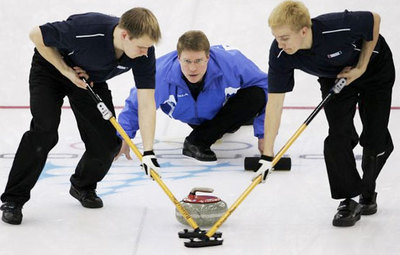 I’m sure you’re probably as baffled by this Olympic sport as I am. We never had curling teams in high school, and nobody that I know ever bought curling season tickets to tournaments at Madison Square Garden. Growing up, the only curling I was aware of involved round plastic things that my sister would put in her hair.
I’m sure you’re probably as baffled by this Olympic sport as I am. We never had curling teams in high school, and nobody that I know ever bought curling season tickets to tournaments at Madison Square Garden. Growing up, the only curling I was aware of involved round plastic things that my sister would put in her hair.
But now, the mystery is solved:
First, let’s get a bit of the jargon down. The playing surface in curling is called “the sheet.” Sheet dimensions can vary, but they’re usually around 150 feet long by about 15 feet wide. The sheet is covered with tiny droplets of water that become ice and cause the stones to “curl,” or deviate from a straight path. These water droplets are known as “pebble.”
At each end there’s a target that looks like a big bullseye. These targets are known as “the houses.” The center of the house is known as the “button.” Basically, the object of the game is to get your stones closer to the button than the other team gets theirs.
Remember how we talked about the pebble of ice droplets that the rock has to travel across? When the stone touches the pebble, there’s friction, which can slow down the stone and makes it curl away from its straight path to the house.
Obviously, that friction is not always a good thing, but sweeping helps combat the problem. The sweeping motion raises the temperature of the ice by a degree or two, which diminishes the friction between the pebble and the stone and keeps the stone moving in a straight line.
Curious for more? Check the link.

